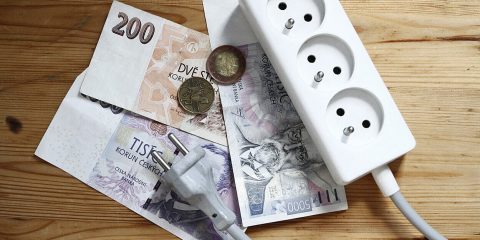
I wanted to do a little review of what we spend the most on electricity and I couldn't help but be surprised because I discovered two pretty huge energy guzzlers that I had no idea about.
Are you waiting for lighting, a refrigerator, a washing machine and a microwave? Only water - even if they also eat a lot, it is difficult to do without them and there is not much space to save.
I found two big stand-by culprits:
Large LCD TV – the fact that it consumes around 200-300W when switched on did not surprise me, but in standby mode it consumes 38W every hour and that is quite enough.
He showed himself with the second devourer computer and again in stand-by mode. Even though I tried to set the consumption as low as possible in the BIOS, I was surprised that with two large monitors it consumes an unbelievable 88W every hour in standby.
If only these two devices are in the socket 24h / 365 days OFF, we get to 1,103 kW per year, which at the current price is approx. CZK 10 per kW of nice CZK 11,000 annually thrown out the window.
And since this amount represents roughly 1/4 - 1/3 of our household's total consumption, it's quite a lot.
So what about that?
First, it is necessary to reveal the "perpetrator". Just buy the cheapest one meter and plug the appliance into it and find out what kind of "stand-by gluttons" you have at home.
If you are not using the appliances, get a socket with a switch and just turn them off. For example, with the TV we use in the evening to watch movies, I solved it switching clock and every evening the television switches itself into standby mode.
Another slightly more expensive option is some model smart sockets, which can be programmed or controlled, for example, via Wi-Fi. But beware the outlet also eats something, so that you don't spill the baby with the bath and the saving measure doesn't eat more energy than the appliance itself...
And we'll talk about how to knit a sweater next time... 😉
EDIT – my measurement is also confirmed by this text, for example:
https://20somethingfinance.com/electrical-leaking-standby-appliance-list/






















For TV/monitor/LCD in general, reducing the brightness (around 25%, etc.) will save the total consumption and extend the life of the appliance. Above all, do not use any unnecessary "pole effects" such as automatic/advanced contrast, etc., and where it can be used (at night from 7 p.m. to 7 a.m.) reduce the emissions of "blue light" / night lighting (we have it active on our phones all day). And most importantly, have sockets with a switch everywhere, after disconnecting from the electricity. e.g. computers, TV.. there is a battery to keep the settings, so cool. We have been practicing for years, except for the fridge, freezer, digital clock, everything is de facto turned off/unplugged most of the day 🙂
And with a 65″ TV, you probably already sit at least min. 4 meters from her, huh?
We have been using sockets with a switch for a long time (or an extension cord with a switch), there is nothing better for saving and switching off "stand by" appliances. When we leave the house, I check that all these outlets are turned off. Right now, we only have the refrigerator turned on in the socket. We also use the switch to disconnect the electric kettle, which does not have a stand-by mode and has no consumption when it is switched off, BUT it is potentially dangerous from the point of view of self-starting or a short circuit, so leaving it connected to the network during your absence is a considerable risk.
#Large LCD television - the fact that it consumes around 200-300W when switched on did not surprise me, but in stand-by mode off it consumes 38W every hour and that is quite a lot. #
Please do you mean:
1. do you have standby turned off, but the cable from the TV is always in the socket, so just by not pulling it out of the socket, the TV consumes 38W in an hour?
2. What exactly is BIG television in your opinion? E.g. from 100 cm?
Thanks for the info.
1) I mean classic stand-by - a TV in a socket that "pretends" to be switched off (red light).
There is no other option - on and off (stand-by).
And yes, in this mode it consumes 38W per hour. Of course, after being pulled from the network, there is peace... 😉
2) Panasonic 4K – 65″ (164 cm)